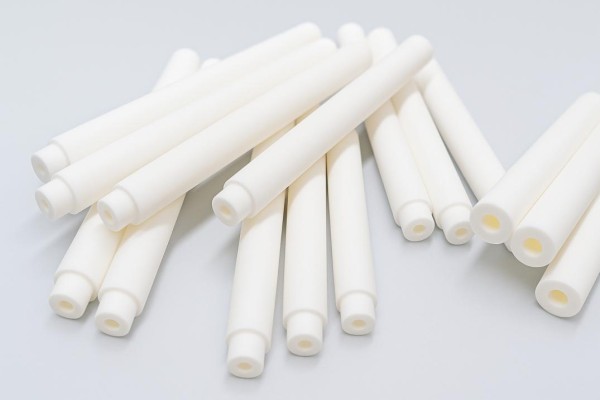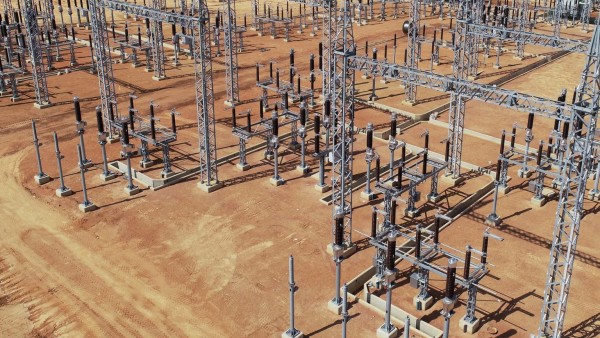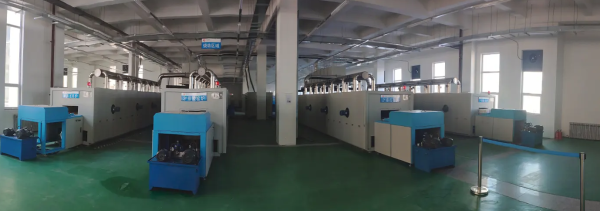Why Choose Ceramic Alumina Tubes for High-Voltage Systems
China, 8th Nov 2025 — Engineers face a tough reality in high-voltage design. Heat rises. Voltages spike. Chemicals corrode. Precision drifts. Downtime is costly. Many components fail when exposed to these forces at once. A Ceramic Alumina Tube changes that equation. UPCERA has expanded availability of high-purity ceramic alumina tubes and matching insulators for demanding electrical systems.

The core problem is reliability. High-voltage assemblies must insulate, seal, and align under stress. Metals conduct and deform. Polymers creep, outgas, and age. Composites crack with thermal shock. The market needs a stable, clean, and precise material. This is where Electrical Insulating Ceramics excel, especially alumina.
What Sets a Ceramic Alumina Tube Apart
UPCERA’s ceramic alumina tube is made from ≥99.5% Al₂O₃. The tube resists heat, wear, and corrosion. It also delivers strong electrical insulation. The stepped geometry gives an accurate seat between parts. It seals interfaces and keeps alignment stable. That precision protects against leaks, arcing, and vibration damage.
Key performance advantages include:
• Excellent electrical insulation. High dielectric strength enables safe clearance at high voltages.
• Outstanding heat resistance. Continuous service up to 1600°C helps maintain stable performance.
• High mechanical strength. Dense microstructure resists bending and impact.
• Precision fit design. Dimensional tolerance can reach ±0.01 mm.
• Corrosion and wear resistance. Reliable in acidic, alkaline, and particle-erosive flows.
These traits matter in real systems. Think electronic protection tubes, high-temperature gas conduits, and vacuum instruments. Think HV isolation sleeves inside test gear and power modules. In each case, the tube must survive heat and voltage while keeping components aligned and sealed.

Solving Industry Pain Points
Pain point 1: Insulation breakdown at high temperature.
Many materials lose dielectric strength as heat climbs. Alumina keeps insulation high at temperature. The tube’s low dielectric loss supports stable AC and DC performance. That reduces partial discharge risk.
Pain point 2: Leaks and misalignment during assembly.
Complex stacks require transitions in diameter. The stepped structure gives a firm seat and repeatable location. It prevents rocking, creeping, and micro-leaks. Installers get a “drop-in” precision feel.
Pain point 3: Corrosion and contamination.
Reactive gases and liquids attack metals and polymers. High-purity alumina is inert and non-magnetic. It does not outgas. It keeps vacuum cleanliness and chemical integrity.
Pain point 4: Dimensional drift over time.
Thermal cycling causes distortion in many parts. Alumina’s low thermal expansion preserves tolerances. The tube stays true after thousands of cycles.
Pain point 5: Machinability of ultra-hard materials.
The industry struggles with Ultra-Hard Ceramic Machining. Tolerances slip. Lead times stretch. UPCERA invests in end-to-end process control. Alumina Ceramic Machining is handled with dedicated tooling, metrology, and advanced sintering control. The result is tight geometry with consistent batch-to-batch quality.
Where These Tubes Are Used:
• Electronic component protection and HV isolation
• High-temperature gas or liquid transfer lines
• Vacuum systems and analytical instruments
• Precision mechanical structures in heat zones
• Semiconductor, laboratory, and furnace equipment
• Chemical and new-materials processing
Each application benefits from the same set of properties: insulation, thermal stability, strength, and precision.

Complementary Components: Insulators and Rods
A system rarely needs a tube alone. UPCERA supplies matched components to complete the stack.
• Alumina Ceramic Insulator.
This insulator uses ~99% alumina. It offers high dielectric strength and low loss. It resists thermal shock and chemical attack. Tolerances can reach ±0.01 mm. Designs include multi-hole formats for wire or fluid management. RoHS and REACH compliance supports global deployments.
• Custom Ceramic Rod.
When assemblies need standoffs, spacers, or guide pins, a Custom Ceramic Rod provides strength, wear resistance, and insulation. Options include alumina or zirconia. Smooth surfaces and tight tolerances simplify integration. The rods perform in high-temperature and corrosive settings. They are ideal for cleanrooms, sensors, heaters, and precision tools.
Manufacturing That Enables Reliability
High-voltage systems demand repeatability. UPCERA operates an integrated chain from powder to finished parts. Material selection, sintering profiles, and finishing routes are controlled. Alumina Ceramic Machining happens after sintering with precision metrology. Internal steps, bores, and sealing faces are held to spec. This reduces rework and scrap.
When tolerances tighten, Ultra-Hard Ceramic Machining becomes the bottleneck for many suppliers. UPCERA addresses this with dedicated machines, diamond tooling strategies, and real-time dimensional checks. Process capability supports ±0.01 mm on critical fits. Engineers can design for performance rather than compromise for manufacturability.

Why High-Voltage Engineers Choose Alumina?
• Safety margin. High dielectric strength at temperature reduces failure risk.
• Thermal headroom. Continuous service up to 1600°C allows aggressive duty cycles.
• Mechanical integrity. High strength and hardness resist cracking and wear.
• Clean operation. Inert, non-magnetic, and low outgassing for vacuum and RF systems.
• Precision fit. Stepped transitions align parts and protect seals.
• Lifecycle value. Longer service life offsets initial component cost.
A Word from UPCERA
“Customers ask for stability at extreme limits,” said a spokesperson for UPCERA. “Our Ceramic Alumina Tube and insulator families are built for those limits. We combine high-purity powders, robust sintering, and precision finishing. The goal is simple: consistent parts that make high-voltage systems safer and more reliable.”
About UPCERA
Founded in 2003, UPCERA pioneered zirconia ceramic sleeves in optical communications. The company now delivers advanced Electrical Insulating Ceramics across industries. In 2018, UPCERA joined Sinocera to strengthen the full value chain. Since 2021, Shenzhen Upcera Innovative Materials Co., Ltd. has focused on precision structural ceramics for global clients. Products now serve more than 100 countries and regions. Sectors include semiconductors, aerospace, healthcare, new energy, chemicals, and industrial equipment.

Specification Snapshot
• Material: ≥99.5% Al₂O₃ for tubes; ~99% Al₂O₃ for insulators
• Temperature: Continuous operation up to 1600°C
• Tolerance: As tight as ±0.01 mm on critical features
• Features: Stepped geometry, smooth sealing faces, corrosion resistance
• Compliance: RoHS and REACH for insulators
From Prototype to Scale
UPCERA supports rapid sampling and volume production. Engineers can request design reviews, drawing feedback, and material guidance. Matching parts like the Custom Ceramic Rod simplify the bill of materials. One supplier. One tolerance stack. One quality system.
Bottom line: For high-voltage systems, a Ceramic Alumina Tube offers insulation, heat resistance, strength, and precision in one component. With expert Alumina Ceramic Machining and proven Ultra-Hard Ceramic Machining methods, UPCERA helps teams remove risk from their designs and keep power on—safely and efficiently.
Company Details
Organization: UPCERA
Contact Person: UPCERA
Website: https://www.proupcera.com/
Email: Send Email
Contact Number: +8615572499372
Address: 5F, Block B, Tsinghua Information Port, No.1 Songpingshan New East Road, Xili Street, Nanshan District, Shenzhen, Guangdong, China
Country: China
Release Id: 08112536706
